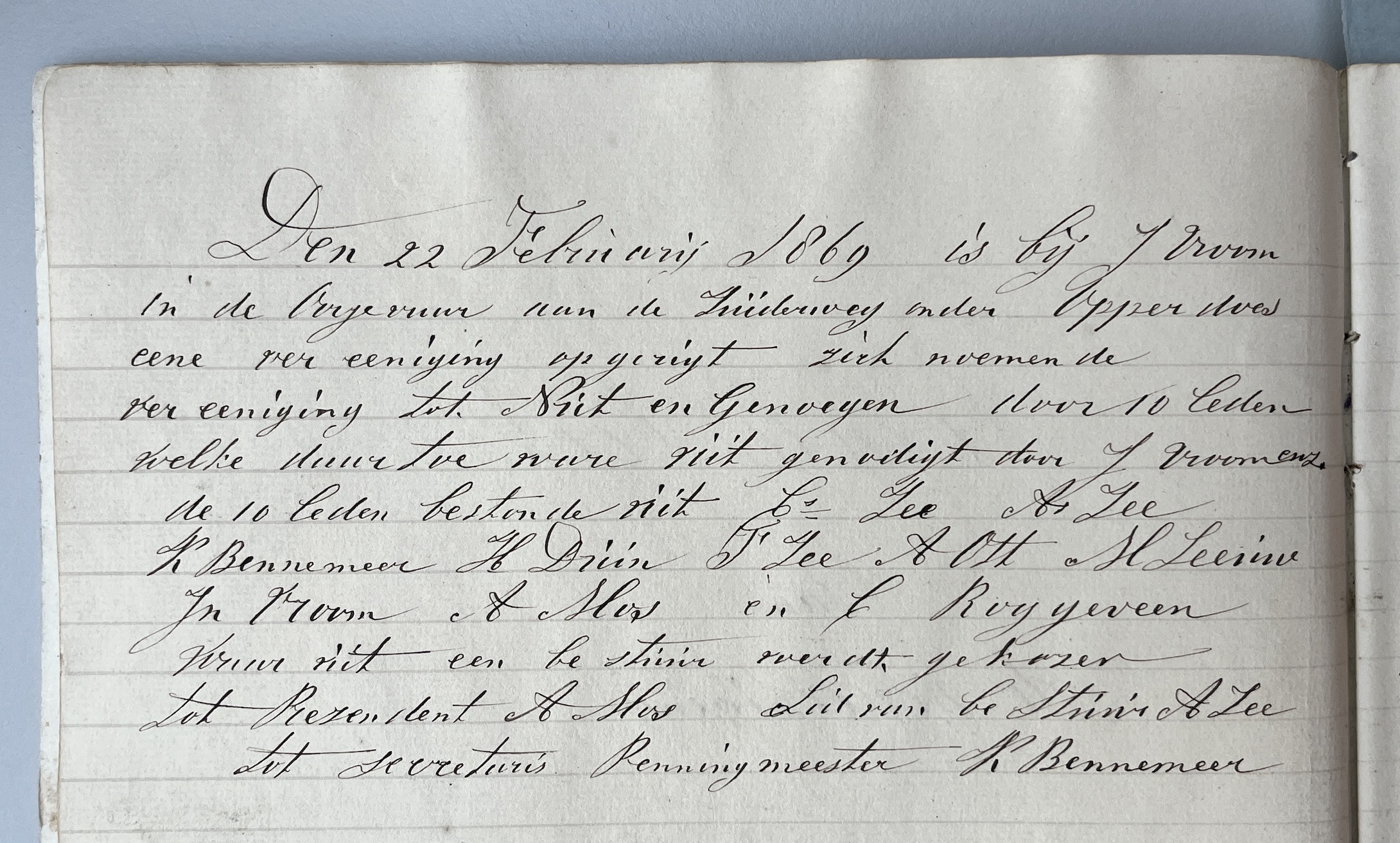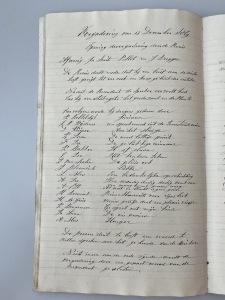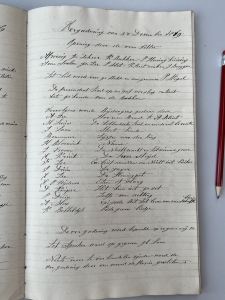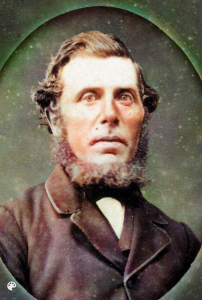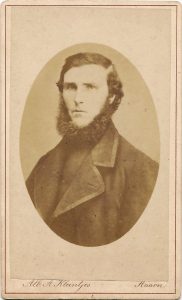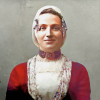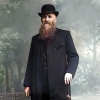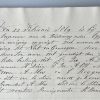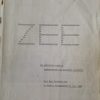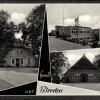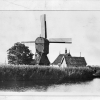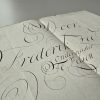In 1995, I was given a family heirloom – a commemorative portrait of my great-grandfather, Frederik Zee, born in Twisk in 1845, and one of the founders of the society, “Nut en Genoegen”.
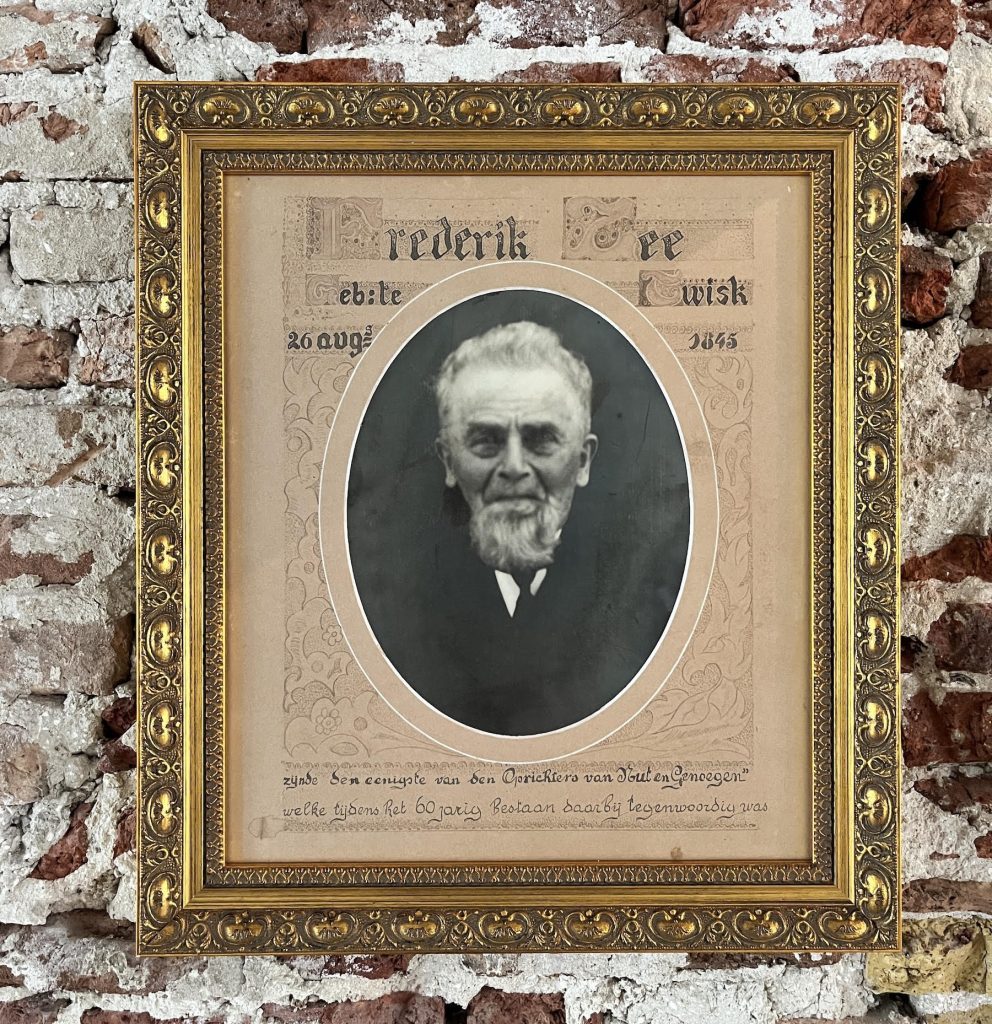
Apart from the information on the portrait itself – which noted that Frederik (known as Freek) was the sole surviving founder present during the 60 year anniversary – nothing further was known in our family about the society.
And so, after thirty years of wondering, I decided it was time for a trip to the Westfries Archief in Hoorn to discover more. I always enjoy visiting the archive, and especially this one. There’s something special about handling original books and papers. It’s essentially a magical time machine that transports you immediately into the past.
And so back to Monday, February 22, 1869.
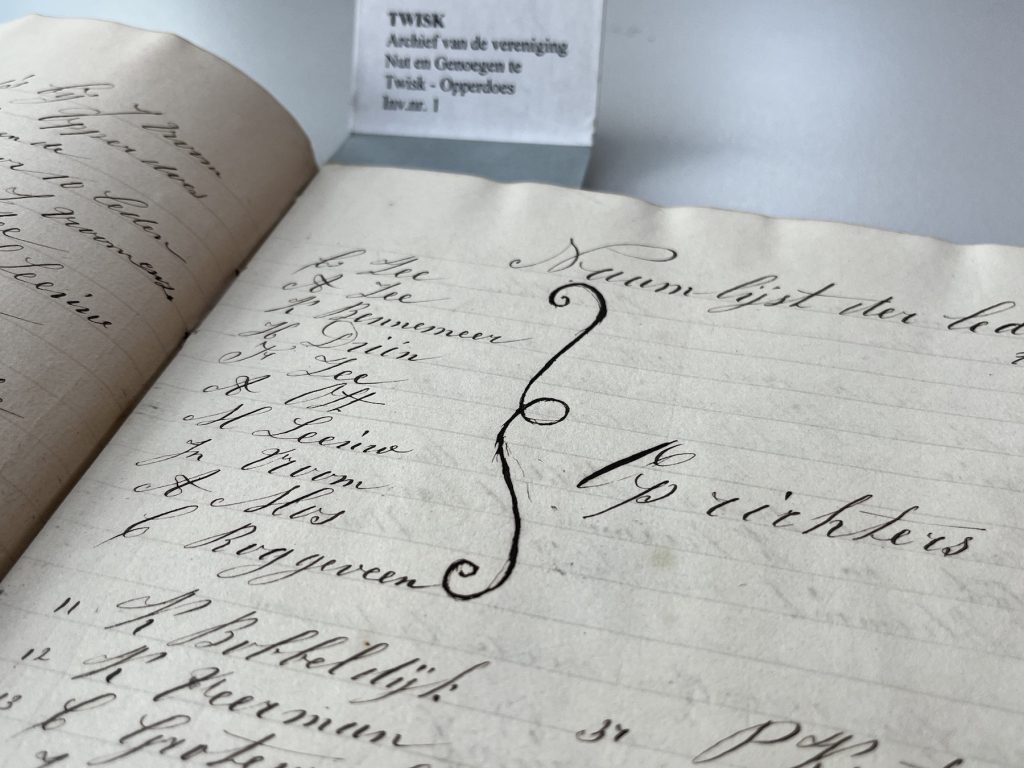
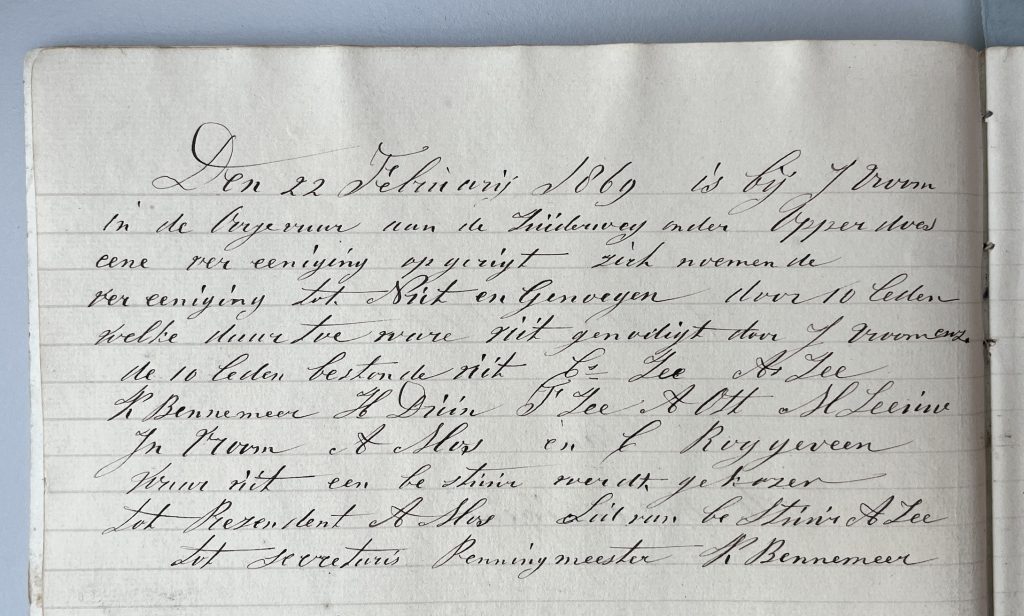
Den 22 February 1869 is bij J. Vroom in de Ooijevaar aan de Zuiderweg onder Opperdoes eene ver eeniging opgericht zich noemen de vereeniging tot Nut en Genoegen door 10 leden welke daar toe ware uit genodigt door J. Vroom. De 10 leden bestande uit C. Zee, A. Zee, K. Bennemeer, Jb. Duin, F. Zee, A. Ott, M. Leeuw, Jn Vroom, A. Mos en C. Roggeveen. Waar uit een bestuur wordt gekozen tot Prezendent A. Mos, Lit van bestuur A. Zee tot secretaris, Penningmeester K. Bennemeer.
So here we have our list of founders. Who were they? Jan Vroom, at the time 29, was the owner of the “Ooijevaar”, one of a couple of cafes in Twisk, on the corner of Zuiderweg and Dorpsweg. His wife was Grietje Stam. The society would hold all of their meetings here, including the 60 year anniversary mentioned above.
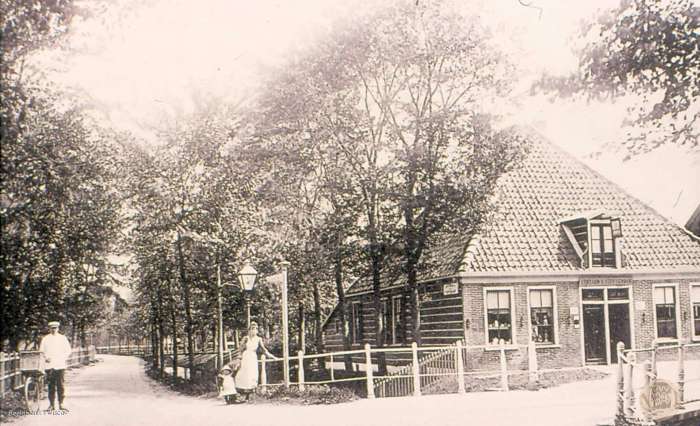
The three Zee’s were Cornelis (Cees) Zee, Andries (Dries) Zee, and Frederik (Freek Zee) – all brothers, and children of Pieter Zee and Neeltje Veer. Cees Zee was the eldest at 33, already a father of three, with wife Maartje Pels pregnant with their fourth, Arie. Dries Zee was 27, married to Neeltje Leeuw, and the day before, they had celebrated the first birthday of their first son Pieter. Freek Zee was 23, and had married Maartje Bakker the year before. All were farmers, like the majority of men in Twisk at that time.
Two further founders were connected to the Zee family. Meindert Leeuw was the elder brother of Neeltje, Dries’s wife. He was married to Guurtje Timmerman, and was about to turn 30. The Leeuw family were Doopsgezind. Father Dirk Leeuw was a carpenter in Twisk, and married to Elsje Kort. Jacob Duin was another brother-in-law to the three Zee’s, his wife was Antje Zee, and he was 33.
Now to the other five. Klaas Bennemeer was a carpenter, aged 27, originally from Midwoud, and married to Aaltje Smit. His father was Cornelis Bennemeer, a kastelein (inn-keeper) in Midwoud. Alewijn Ott was the eldest of the group at 37. He was a butcher, originally from Abbekerk, and married to Dirkje Peetoom. Andries Mos, a wagenmaker, was a little older than the others, about to turn 50. He was originally from Edam, and married to Hiltje Bart. Cornelis Roggeveen was the eldest at 52, a tailor, born in Schagen. He was married to Aaltje van Viersen. His son Adriaan Roggeveen would later become the mayor of Opperdoes, and would also marry the cafe owner Jan Vroom’s younger sister Geertje.
Following the formation formalities, the society opened up it’s first evenings activities. But what was “Nut en Genoegen” about; what was the purpose of the society? In Twisk, in 1869, what did you do on a winters evening for entertainment? There wasn’t much, and the society was there to fill that void. It was in essence a social club, perhaps better described as a story-telling society. Each member had their chance to stand up and regale the others with an anecdote, a joke, a short skit – or a song, verse, or poem.
Each contribution was dutifully recorded in the notebook. Alewijn Ott was the first to volunteer, with “aan den Duivel”. Cees Zee followed with a “Gezondheids recept”. Cess Roggeveen presented “Een Heilwensch”, Meindert Leeuw “Een nuts bijdrage”, Jan Vroom “Wijsgeerig ABC”, Klaas Bennemeer “Iets tegen zelfsverhefting”, Freek Zee “Jan Barens”, en finally Andries Mos “De Stoomboot”.
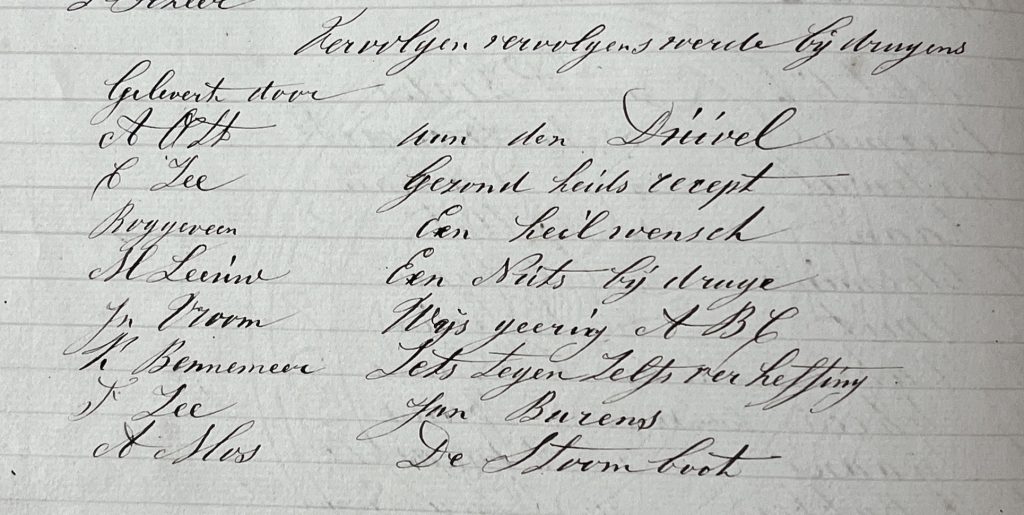
With the society up and running, meetings began to be held every second Monday. The second meeting, held on March 8th, included their wives. The format was quickly established. The President (initially Andries Mos) would open the meeting with a few words. He would then introduce the Redenaar for the evening, which was one of the members that has been chosen at the previous meeting. The Redenaar would then present the first piece – setting the standard for the night. No doubt, in the days leading up to the gathering, the Redenaar would have practiced his offering and probably had a few nerves (dutifully settled with a little sip of something strong). After a round of applause, the floor was open to anyone that wanted to contribute. Each song, skit, or joke was carefully and neatly noted down in the notebook. After the last one, the meeting would close with the appointment of the Redenaar for the next meeting.
When summer started to get closer, the society would pause for the season. There was a definite pattern to life in Twisk in those days. April and May were the most common months for weddings, and also moving house if that was on the agenda. Cows were moved from the barns into the meadows – and often, the family would then move into the cowshed after a few days cleaning it out. It was cooler there than in the rest of the house. Harvest time was also very busy for everyone, and in most years the society did not reconvene until September or October.
The first new members outside of the founding ten were also joining quickly. The first were K. Bobbeldijk, K. Veerman, C. Grotewal, Jn. Laan, H. Bloemink, Jn. Smit, D. Waker, J. Scheer, C. Zwaan, and K. H. Bakker. They were followed by D. and L. Timmerman, P. Haringhuizen, J. van Soelen, H. Slotemaker, C. O. Wijdenes, Jn. Zee, H. Landman, P. Slot, and P. Duin. The 50th member was M. Zijp Kz.
By Christmas of 1869, the society was in full swing. The meetings of December 13 and 27 of that year, counted 17 and 15 performances respectively. For the last meeting of the year, Freek Zee offered “Een brief aan neef en nicht van buiten”, and Jan Vroom appropriately presented “De Nachtwacht en het nieuwe jaar”. Dries Zee – who as secretary was also the notebook scribe in these first years of the society – gave as his piece “Hoe men brand te Amsterdam blust”. Dries was notable for rarely missing a meeting, and performed light-hearted and comedic scripts as often as he was allowed. He clearly enjoyed the proceedings, and dilignetly kept legible and concise notes. Below are the entries for December 1869, written by A. Zee.
Reading through the notebook, an interesting question slowly arises. What are all these pieces that are being performed, and where do they come from? Are they stories, poems, songs, plays? Who wrote them? Is this a snapshot of popular culture at the time?
“De Nachtwacht en het nieuwe jaar”, as mentioned above, is a good starting point. It’s a poetic verse published in 1862, and begins as follows:
Nachtwacht: ‘ t Is middernacht ! de stadsklok slaat, Wie maakt hier dat rumoer zoo laat? Gesloten is reeds lang de poort, Wie is ‘t , die hier de nachtrust stoort?
Nieuwe Jaar: Ik heet Nieuwjaar, mijn brave wacht, ‘ k Stam van een goed en oud geslacht, Veel zusters gingen mij reeds voor Kom nachtwacht , laat ook mij nu door .
Nachtwacht: Zacht, zacht een beetje haastig kind, Hoe zoo voortvarend, zoo gezwind ? Jou zusters waren capricieus, Dat had ik lang reeds in den neus.
It’s published in the 1862 book, Luimige Poëzy 1, which is a collection of stories in verse, with a touch of humour. Looking at the table of contents, other presentations to Nut en Genoegen also came from this book, including Jan Vrooms “Wijsgeerig A.B.C.” at the opening meeting, and Freek Zee’s “Smokkelpartij”.
With the society almost a year old, Alewijn Ott proposed in January 1870 “om de vrouwelijke gasten
ongehuwde met 20 ct entree te verhoogen.” Maar “Het geen werdt tegengestemd door 22 van de 28 stemmen”. “Vervolgens is bepaald om leden der christelijke kerk en niet jonger, toegang tot de (cateden?) te verleenen. Op voorstel van A. Zee is bepaald dat bij ‘t lezen der naamlijst ieder zijn gaste opgeeft, en ieder gast die met geen lid mede komt betaald 50 ct entree.”

A little about Jan Vroom, the owner of the cafe “Ooijevaar”. He was born May 29, 1839 in Abbekerk, son of Jacob Vroom and Grietje Bruijn. Doopsgezind familie. He married Grietje Stam from Midwoud in 1865, daughter of Pieter Stam and Trijntje Komen. Daughter Grietje was born 1866. Pieter 1869. Trijntje 1871. Maartje 1873. Jacob 1876. Aagje 1880. Arie 1878. In 1866, mentioned as “herbergier” aan de Zuiderweg. In 1865, Landbouwer. So – cafe maybe started in 1866. Grietje died young, at 48, in 1888. Son Pieter became a teacher in Medemblik, but died at only 21, in 1890. Jan re-married to Jantje Waal. The other son, Jacob, took over the cafe c. 1899. He married Elisabeth Bos.
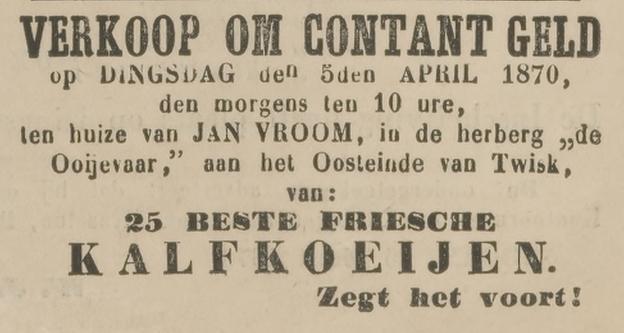

To be continued … story in progress.
Photographs
Footnotes
- H. Nijgh, Luimige Poëzy (Rotterdam: H. Nijgh, 1862), https://play.google.com/books/reader?id=OAdOAAAAcAAJ. ↩︎
